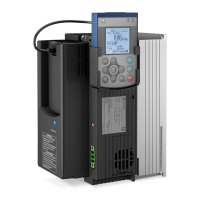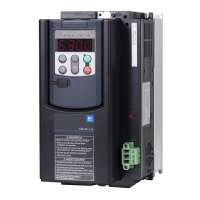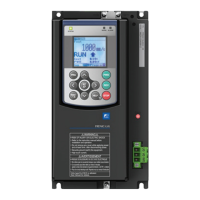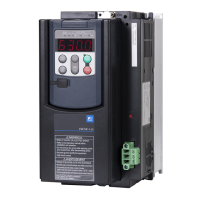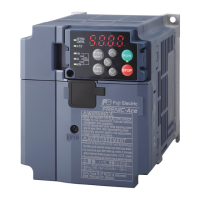7-2
Table 7.1 Continued
Check part Check item How to inspect Evaluation criteria
Structure such
as frame and
cover
1) Abnormal noise and excessive
vibration
2) Loose screws (tightened parts)
3) Deformation and breakage
4) Discoloration and deformation
caused by overheat
5) Check for foulness and dust.
1) Visual or hearing
inspection
2) Retighten.
3), 4), 5)
Visual inspection
1), 2), 3), 4), 5)
No abnormalities
Main circuit
Common
1) Check if bolts and screws are tight
and not missing.
2) Check the devices and insulators for
deformation, cracks, breakage and
discoloration caused by overheat and
deterioration.
3) Check for foulness and dust.
1) Retighten.
2), 3)
Visual inspection
1), 2), 3)
No abnormalities
Conductor
and wire
1) Check the conductor for discoloration
and distortion caused by overheat.
2) Check the sheath of the cable for
cracks and discoloration.
1), 2)
Visual inspection
1), 2)
No abnormalities
Terminal
block
Check that the terminals are not
damaged.
Visual inspection No abnormalities
Filtering
capacitor
1) Check for electrolyte leakage,
discoloration, cracks and swelling of
the case.
2) Check if the safety valve does not
protrude remarkably.
3) Measure the capacitance if
necessary.
1),2)
Visual inspection
3) Measure discharge
time with
capacitance probe.
1),2)
No abnormalities
3) The discharge time is
not shorter than time
specified by the
replacement manual.
Magnetic
contactor
and relay
1) Check for chatters during operation.
2) Check for rough contacts.
1) Hearing inspection
2) Visual inspection
1), 2)
No abnormalities
Control circuit
Printed
circuit board
1) Check for loose screws and
connectors.
2) Check for odor and discoloration.
3) Check for cracks, breakage,
deformation and remarkable rust.
4) Check the capacitors for electrolyte
leaks and deformation.
1) Retighten.
2) Smelling and visual
inspection
3), 4)
Visual inspection
1), 2), 3), 4)
No abnormalities
Cooling system
Cooling fan
1) Check for abnormal noise and
excessive vibration.
2) Check for loose bolts.
3) Check for discoloration caused by
overheat.
1) Hearing and visual
inspection, or turn
manually (be sure to
turn the power OFF).
2) Retighten.
3) Visual inspection
1) Smooth rotation
2), 3)
No abnormalities
Ventilation
path
Check the heat sink, intake and exhaust
ports for clogging and foreign matter.
Visual inspection No abnormalities
If the inverter is stained, wipe it off with a chemically neutral cloth to remove dust, use a vacuum cleaner.

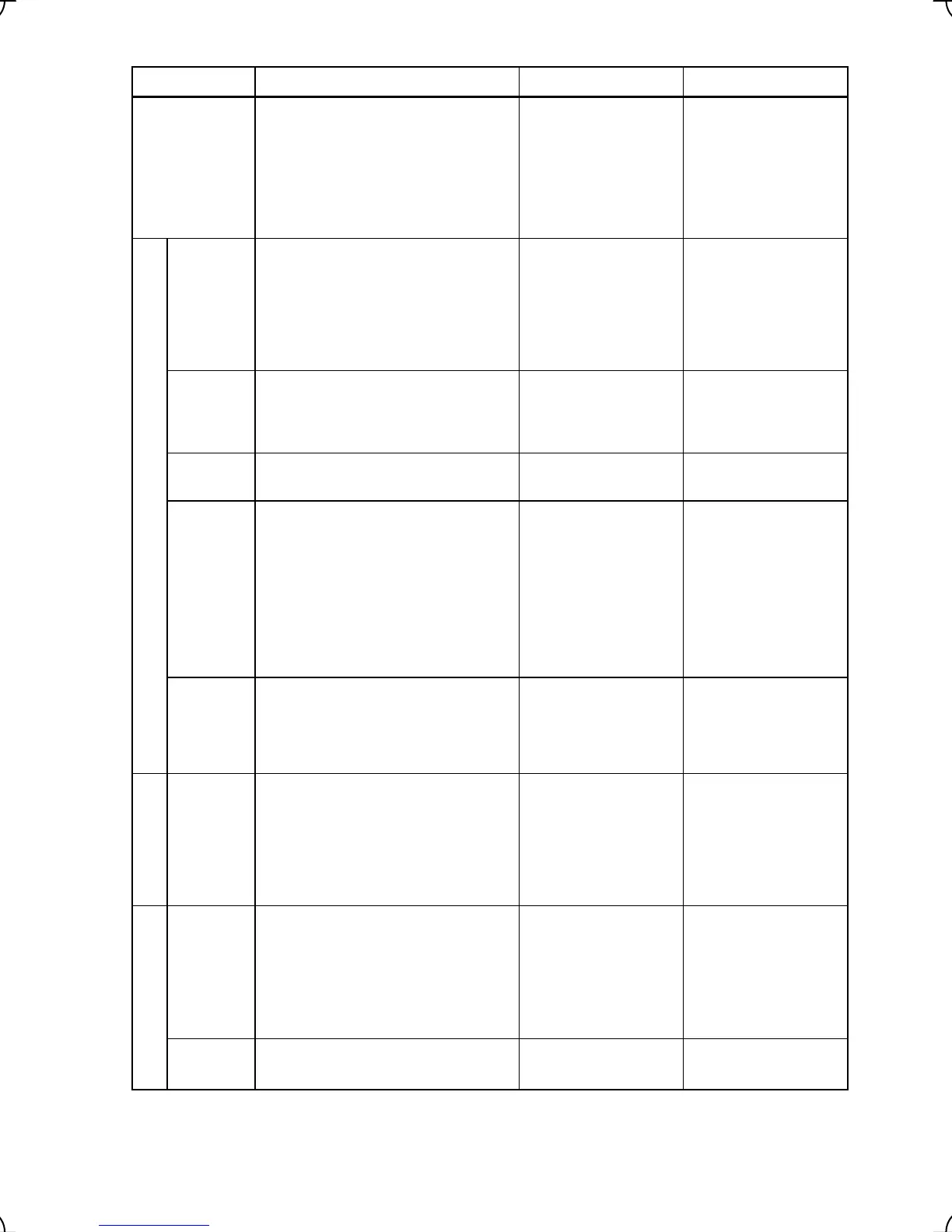